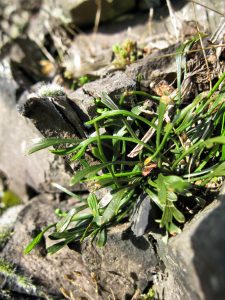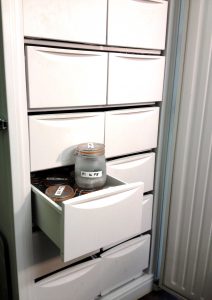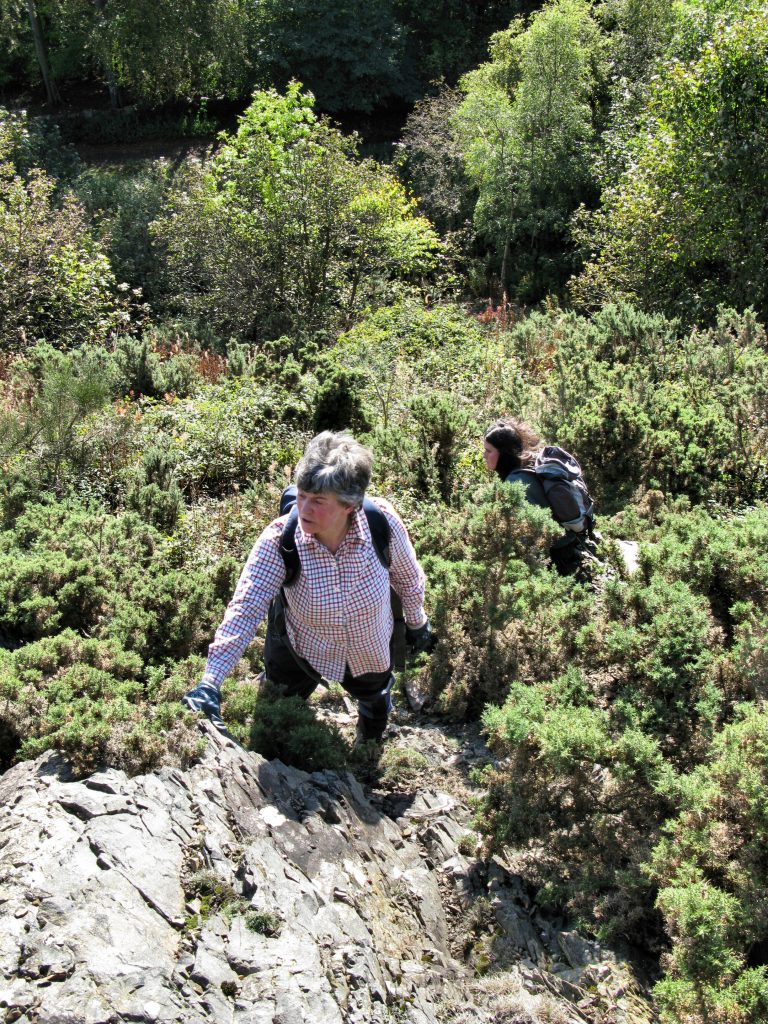Forked spleenwort (Asplenium septentrionale) is one of Britains oddest looking ferns. The narrow forking fronds look similar to some seaweeds. The way that the fronds droop from rock faces just adds to the marine feel of this curious little plant. But this plant is not just a curiosity. It is both nationally scarce (16-100 records for all of the 10km squares in Great Britain) and something of a local speciality in the Edinburgh area.
Really more at home in a warmer mediterranean climate, forked spleenwort manages to find a foothold on the dark bassalt rock faces of places like Holyrood Park. Here the south-facing rock is baked in the summer sun and yet proximity to the sea means that winter temperatures are comparatively mild. Given these exacting requirements it is not altogether surprising that this fern is so rare in Britain.
For some time the Garden’s fern growing expert, Andrew Ensoll, has been successfully growing plants from spores collected at both of the two known sites for this fern in Edinburgh. These plants are part of what is called an ex-situ conservation collection. What this means is that although the plants are now cultivated in a garden their exact wild origin is documented. This means they can potentially be used for translocation back to wild sites to boost flagging populations or to restore locally extinct species.
The tricky thing about growing forked spleenwort in cultivation is that you are forcing a fern that naturally occupies the most minute cracks in rock faces to grow in a pot. The danger here is that unless the watering regime is just right you will kill the fern by over or under watering.
The next step to be taken in conserving this rare plant is to add it to the Garden’s Spore Bank. Ferns produce spores that perform the same function as seeds in that they enable the ferns to spread to new areas of suitable habitat. So in many ways a spore bank is very similar to a seed bank. The basic idea is that if spores/seeds are stored dry and cool their lives are extended considerably. Viability needs to checked from time to time, but the expectation is that samples which might only last for months or a few years could live for 50 to 100 years in the bank. This sort of ex-situ conservation provides a safety net against extinction. Through this sort of targeted conservation the Garden helps to deliver the objectives of Local Biodiversity Action Plans in partnership with Local Authorities.
Due to the extremely small size of spores you can fit a lot of them in a small space so a couple of domestic freezers have provided all that is needed for the Spore Bank. The forked spleenwort will take up life in the freezer, albeit in a state of suspended animation, alongside other rare ferns and the future of the Edinburgh populations of this species will be secured.



